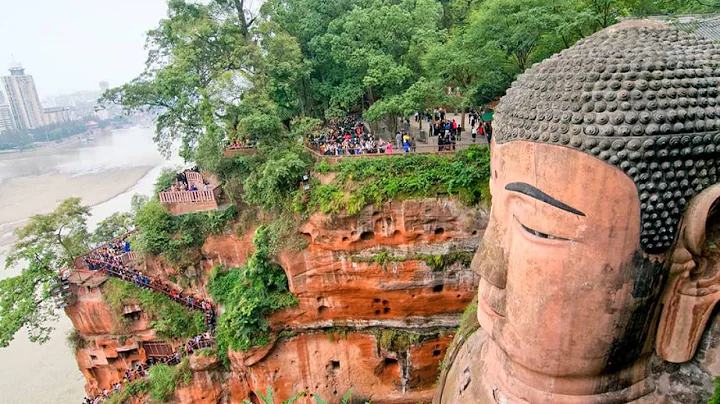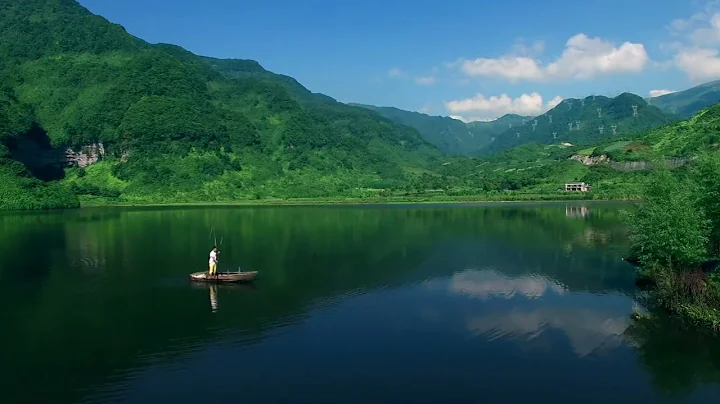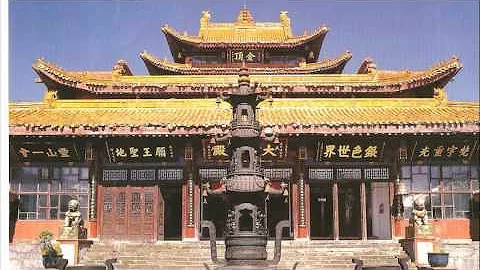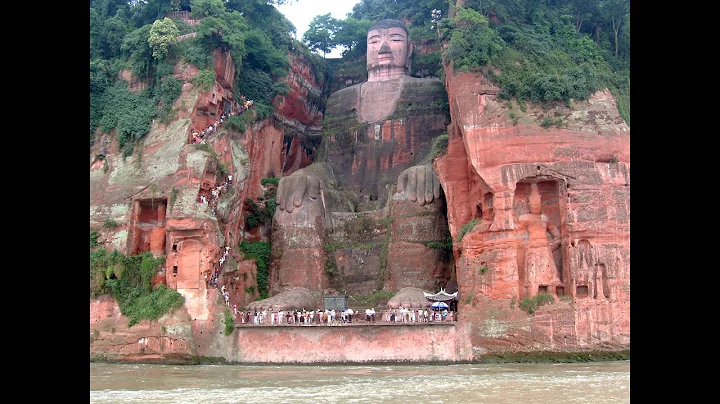


Mount Emei Scenic Area,including Leshan Giant Buddha Scenic Area
Meishan is located in Emeishan City, Sichuan Province, China. The nationally designated scenic area covers an area of 154 square kilometers; the highest peak, the 50,000 Buddha Summit, is also known as the Golden Summit, with an altitude of 3,099 meters and a relative height difference of 2,600 meters. The geology and landforms are unique, and the biological, soil and climate vertical zones are obvious, forming a complete vertical forest spectrum such as dense evergreen broad-leaved forest - evergreen and deciduous mixed forest - coniferous broad-leaved mixed forest - subalpine coniferous forest . Because it is located at the intersection of multiple natural elements, it has rich plant species and complex flora. It has been identified that there are 7242 families of higher plants, more than 3,200 species, accounting for about one-tenth of China's plant species, and more than 320 species of endemic tree species. There are more than 2,300 species of animals, including red pandas, , and 29 species are nationally protected animals.
The Golden Summit is soaring into the sky, reaching into the sky; you can experience different climates from subtropical to frigid zones and appreciate a variety of plants. At the top, you can see the sea of clouds, sunrise, Buddha's light, and holy lantern. The majestic mountain landscape, beautiful plant landscape and magical climate landscape of the whole mountain are integrated into one, forming the characteristics of "majestic, strange, divine and beautiful". It is known as the "Kingdom of Plants", " Geological Museum " and " Emei has the reputation of "showing the best in the world".
The beauty of Emei attracts the gathering of Buddhist temples of Qing Dynasty. Buddhism was introduced to China along the Southern Silk Road. Historically, it is said that in the 1st century AD, the medicine farmer Pugong first built the Puguang Hall of the Buddhist temple on the Golden Summit. In the 3rd century, Puxian Temple (today's Wannian Temple) was built to spread the belief in Puxian Bodhisattva, one of the three sages of Huayan Buddhism. In the middle of the 6th century, Sichuan once became the center of Chinese Buddhism Zen. So far, there are more than 30 Buddhist temples and 164 cultural relics and historic sites in Mount Emei. Among them, the Feilai Hall of and the Beamless Brick Hall of Wannian Temple are the architectural essences listed as national protected objects; the "Huayan Bronze Pagoda" preserved in Fuhu Temple of is 5.4 meters high, with a complete cast of Buddhist scriptures inside and outside. The "Huayan Sutra" and more than 4,700 Buddha statues are rare treasures; the Ming Dynasty bronze statue of Samantabhadra riding a white elephant in Wannian Temple is 7.35 meters high and weighs 62 tons. It is famous at home and abroad. The temple is preserved in the Ming Dynasty Siam The Bay Leaf Sutra presented by the king of (now Thailand) has become a national treasure and an important witness of the Southern Silk Road.
At the eastern foot of Mount Emei, it was built in the early 8th century AD in the Tang Dynasty. The Leshan Giant Buddha took 90 years to complete. It was carved from the stone wall of Qiluan Peak in Lingyun Mountain and is located in the Minjiang, Qingyijiang and Dadu Rivers. At the intersection of three rivers; with a height of 71 meters, it is the tallest stone Maitreya Buddha in the world. From a distance, "the mountain is a Buddha, and the Buddha is a mountain." There are more than 90 niches of Tang Dynasty stone statues on both sides. Nearby are Qinli Dui, Han Cliff Tombs, other Tang Dynasty Buddhist statues, pagodas, Buddhist temples and Song Dynasty anti-Yuan relics.
The dense Buddhist cultural landscape is integrated with the natural environment. Mount Emei has thus become one of the "Four Famous Mountains" of Chinese Buddhism, which is well-known both at home and abroad, and is regarded as the "Fairy Mountain in the Land of Buddhism".
In 1996, at the 20th Session of the World Heritage Committee held in Merida, Mexico, "Mount Emei - Leshan " was included in the "World Heritage List" based on the following standards:
Standard IV: There are more than 30 temples in Mount Emei. , ten of which are grand and ancient. They are all built on the hillside according to the local traditional style and taking advantage of the terrain. In terms of site selection, design, and construction, they are masterpieces of creativity and wisdom. These advanced architectural concepts and construction techniques are the essence of Chinese temple architecture. Associated with these temples are some important Chinese cultural treasures, including the extraordinary Leshan Giant Buddha. It was excavated from the mountain wall of Lingyun Mountain in the 8th century AD. Facing the intersection of the Min River, the Dadu River, and the Qingyi River, the Giant Buddha has become the world's tallest Buddha sculpture with a height of 71 meters.
Standard VI: In Mount Emei, the importance of combining tangible and intangible elements, natural and cultural elements is of paramount importance.As one of the four sacred mountains of Chinese Buddhism, Mount Emei has important historical significance. Buddhism spread from India to Mount Emei via the Silk Road in the 1st century AD, and China's first Buddhist temple was built on the mountain. Mount Emei's rich Buddhist cultural heritage has more than 2,000 years of historical records, including archaeological sites, important buildings, tombs, sacrificial sites, and other traditional cultural treasures such as sculptures, stone carvings, calligraphy, paintings, music, etc.
Standard X: Mount Emei is of particular conservation and scientific significance because of its high plant diversity. The biological diversity here is extremely rich: 3,200 plant species in 242 families and genera have been recorded, of which 31 species are under national key protection and more than 100 species are endemic. This is because Mount Emei is located in the transitional area from the edge of the Sichuan Basin to the eastern Himalayan Plateau. Within its altitude of 2,600 meters, there are a wide variety of vegetation zones, including subtropical evergreen broadleaf forest, mixed evergreen and deciduous broadleaf forest, mixed broadleaf and coniferous forest, subalpine With coniferous forest. This unique flora also contains an abundance of animal species, with 2,300 recorded species, including several globally endangered species.
"Civilization" magazine Taobao store subscription
Open Taobao app, copy the link and search to enter the store,
Subscribe to each issue of Civilization magazine immediately
https://shop177692594.taobao.com/search.htm?spm=a1z10. 1-c.0.0 .3a613a27JW5D4Z&search=y
Scan the QR code on the lower right side of the cover and follow the Civilization magazine official account: WENMINGZAZHI for more exciting content.
Copyright statement: The articles and pictures used in "Civilization" magazine belong to the relevant rights holders. If there is improper use due to objective reasons, the relevant rights holders are kindly requested to contact us at any time to handle it promptly. Reprinting of copyrighted works without the authorization of Civilization Magazine is strictly prohibited, and violators will be held legally responsible. Customer service email: [email protected] Tel: 010-67135553/67112221; 13146832364/15611146084

![Leshan Giant Buddha, Sichuan, China [Amazing Places 4K] - DayDayNews](https://i.ytimg.com/vi/_hxbHP2_3K8/hq720.jpg?sqp=-oaymwEcCNAFEJQDSFXyq4qpAw4IARUAAIhCGAFwAcABBg==&rs=AOn4CLAxqcRnbjviVqnzoZj-oDBVYGrSNw)
![Leshan Giant Buddha, Sichuan, China [Amazing Places 4K] - DayDayNews](https://cdn-dd.daydaynews.cc/img/play.svg)



![[Cantonese] 中国世界遗产 峨眉山 乐山大佛 Mount Emei Scenic Area, including Leshan Giant Buddha Scenic Area - DayDayNews](https://i.ytimg.com/vi/9WledSTxsX0/hq720.jpg?sqp=-oaymwE2CNAFEJQDSFXyq4qpAygIARUAAIhCGAFwAcABBvABAfgB_gmAAtAFigIMCAAQARhlIGEoSDAP&rs=AOn4CLCoGhGCp2nTfRoe7TrpC4J47TIB9w)















